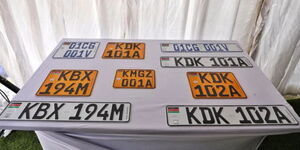Most homeowners prefer to have their floors and walls properly worked on after construction as part of the final house's finishing touches.
To achieve exemplarity, the contractors apply various techniques in decoration with tiling being the most preferred as a finishing product to bring attractive aesthetics to the home.
They are usually thin, square or rectangular coverings manufactured from hard-wearing material such as ceramic, stone, metal, baked clay, or even glass.
These tiles are generally fixed in place in an array to cover roofs, floors, walls, edges, or other objects such as tabletops.
Tiles are mostly preferred nowadays compared to granite because of their advantages like stain and scratch resistance, low maintenance, ease of installation and not fading when exposed to sunlight or to high or low temperatures.
There are different types of tiles used for floors, walls, interiors, and bathrooms.
Ceramic Tiles
These are the most common type of tiling used for flooring. They are made up of silica and clay that is made hard at high temperatures.
There are two types of tiles designs in ceramic including glazed tiles and quarry tiles.
Glazed tiles come with a glaze coating, which is added after firing ceramic tiles to get in different colours and textures.
These tiles come in good styles and are available in different colours compared to quarry tiles and also offer stain and water resistance.
Porcelain Tiles:
These tiles are made by using finely grained clay at higher temperatures compared to ceramic tiles. They are denser, stronger and absorb moisture better but are costlier than ceramic tiles.
The tiles are also available in all finishes and used for both indoor and outdoor installations. Also, they are simple to clean up after accidents, mud, and other debris that would otherwise be a problem.
Glass Tiles:
These tiles are made using sand and recycled glass which makes them eco-friendly. They are mostly used for decorating walls in the living room, and also used in the kitchen and bathrooms.
Because of their popularity, they are used in all expensive places like hotels, palaces, and commercial complexes and make the room brighter by their reflecting properties.
The tiles do not fade, remain stain free, and do not absorb water since glass is impervious to water.
Digital Tiles:
Digital Printing Technology is used to print high-resolution images on glazed tile surfaces. Nowadays all glazed tiles are printed by this technology in all creative looks.
Manufactured using varied materials like ceramic, vitrified, porcelain, digital glazed vitrified, and polished glazed vitrified among others, these tiles are durable and enduring.
Great for use in residential as well as commercial spaces since these tiles are available in a variety of sizes.
When it comes to flooring, it is important to choose according to one's lifestyle, budget, and needs.












